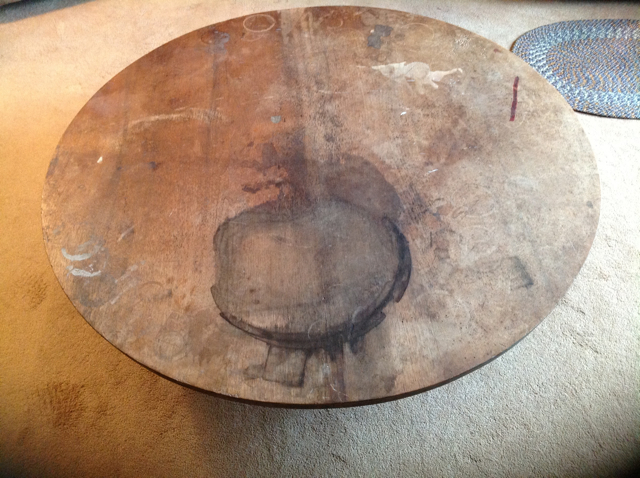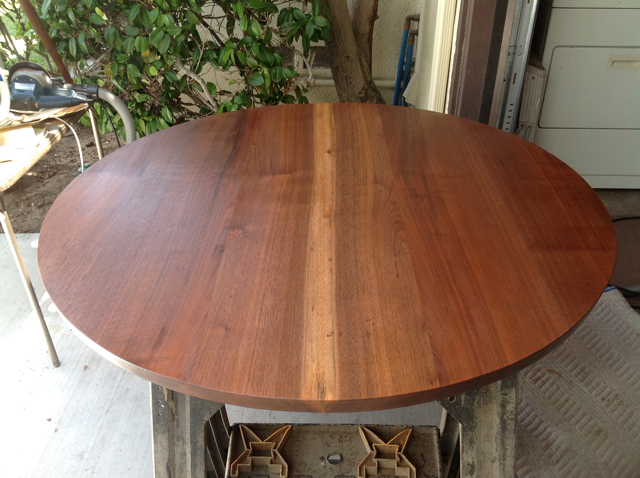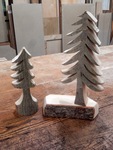We may receive a commission when you use our affiliate links. However, this does not impact our recommendations.
We may receive commission when you use our affiliate links. However, this does not impact our recommendations.

Most people would give up on this walnut tabletop because it would require too much sanding to get below the damage from the black water stains. If the surface was veneer, sanding the stains out would be impossible.
One of the most useful products in wood finishing that doesn’t get a lot of attention is oxalic acid, often labeled wood bleach. It’s useful for removing black water stains without changing the color of the wood. (If the wood has oxidized – for example, cherry darkening – oxalic acid may lighten it back to its original color.) The bleach can also remove shallow rust stains and alkali stains caused by some wood strippers, but its widest use is in removing dark water stains.

The effectiveness of oxalic-acid bleach is clear from this after picture.
Oxalic acid comes in crystal form for you to dissolve in water. Unfortunately, this useful product can be hard to find in stores, but it’s easily available from web sources, including Amazon. There aren’t any shipping restrictions.
To use oxalic acid, first strip the surface to be sure there’s no finish or wax blocking the penetration of the bleach.
Dissolve the crystals in very hot water until no more will dissolve; they just sink to the bottom. Brush the solution (still hot for best results) over the entire surface, not just over the stains.
Let the solution dry back to crystal form. Then wash off the crystals with a hose or well-soaked sponge or cloth. Don’t brush the crystals into the air; they will cause you to cough and choke if you breathe them. Wash the surface several times to be sure you have removed all the crystals and to neutralize the acid in the wood.
You can further neutralize the acid by adding a little baking soda or household ammonia to water and washing with it. But I’ve never had a problem finishing wood with just a water-neutralizing rinse. Curiously, an inaccurate way of neutralizing using vinegar got started in woodworking magazines many decades ago and was repeated over and over. I still come across it now and then. Vinegar is an acid. You don’t neutralize an acid with another acid!
A second or third application of the oxalic-acid solution to the wood after it has dried may help if the stains are stubborn. If a light brown mark remains, you can sand it out easily. It’s usually very superficial.
Here are some supplies and tools we find essential in our everyday work around the shop. We may receive a commission from sales referred by our links; however, we have carefully selected these products for their usefulness and quality.








